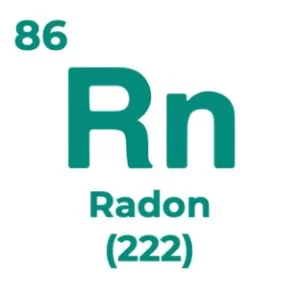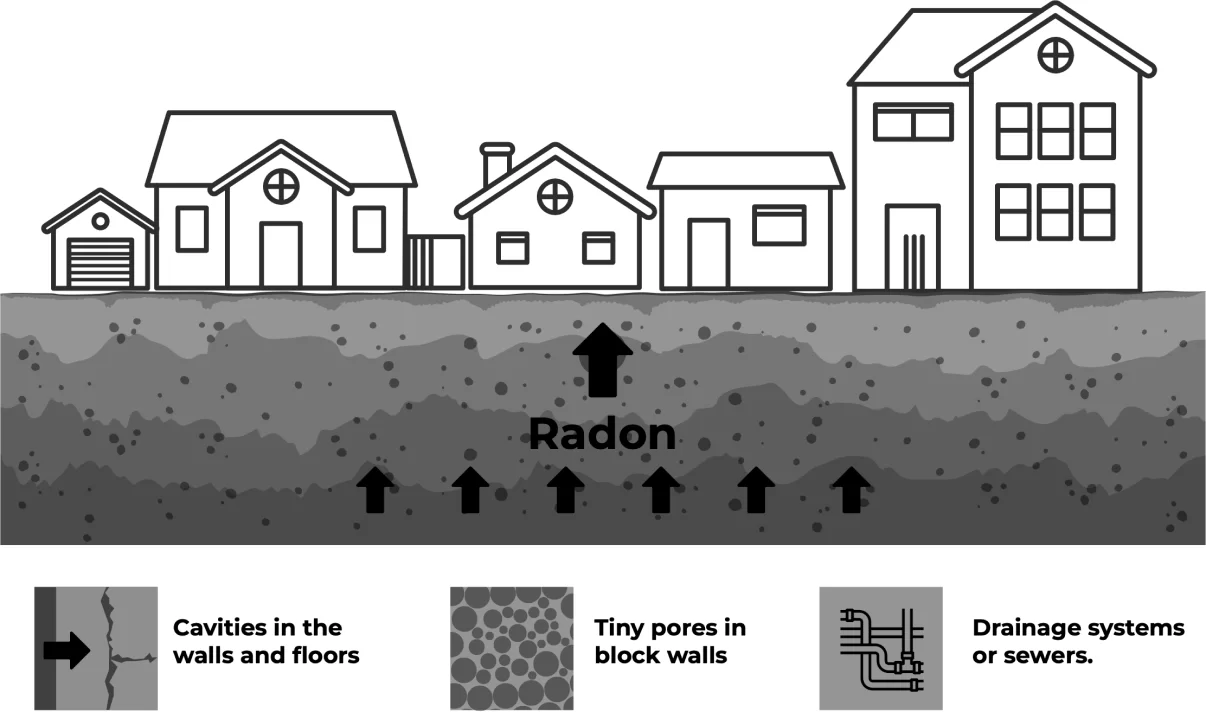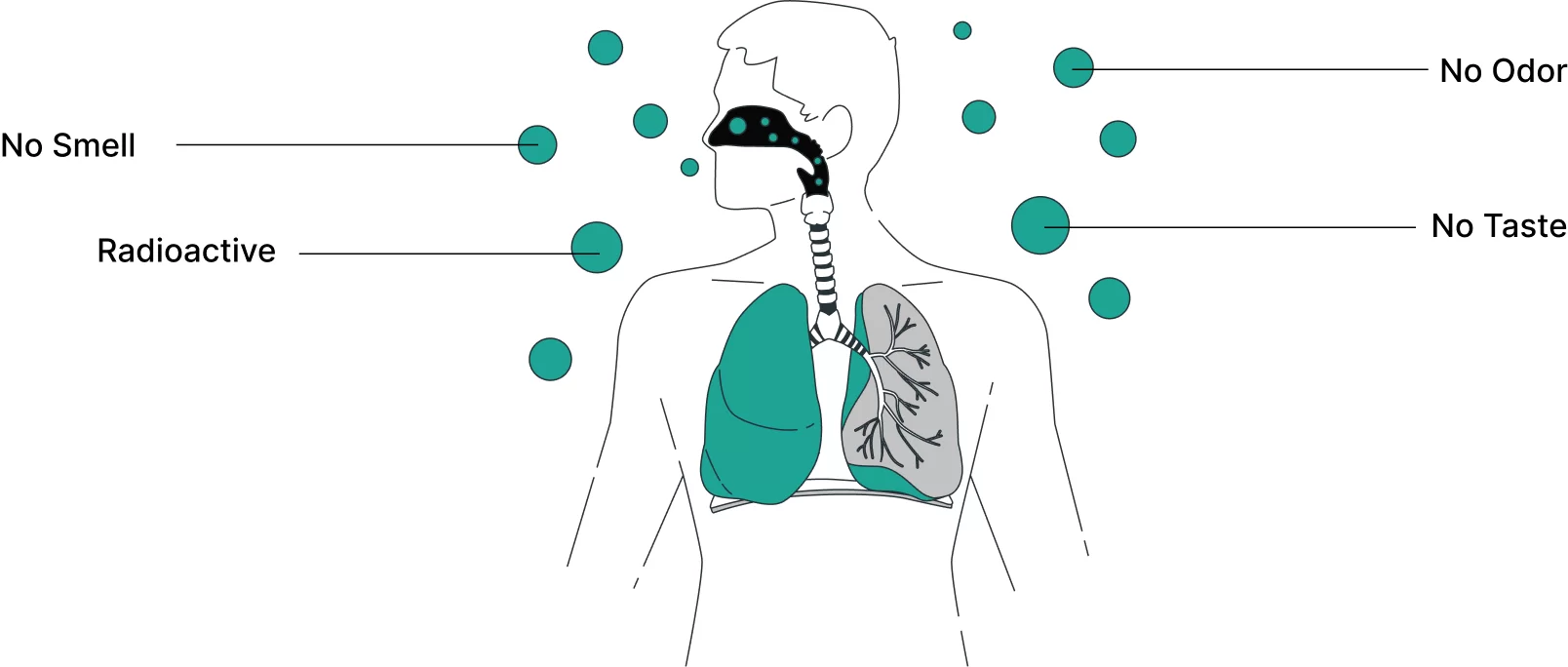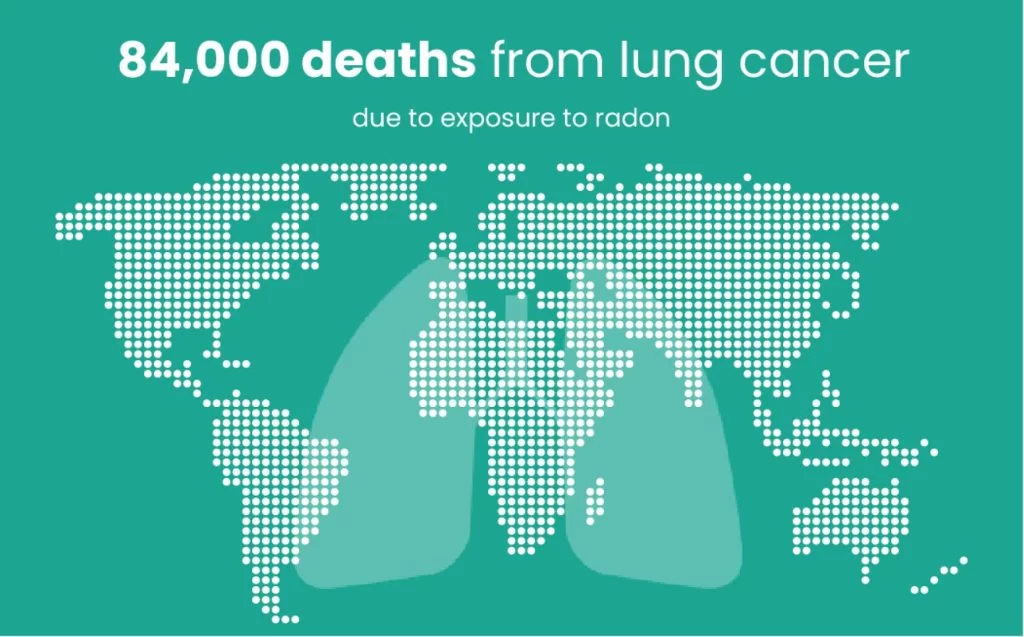
What is Radon (Rn)?
Radon (Rn) is a naturally occurring radioactive gas that is formed by the decay of radium, which is found in most soils. Radon can be found in the atmosphere outdoors. But it is not a health concern as it rapidly dilutes in the atmosphere to very low levels. It is a health concern indoors where this dilution is not possible and the air is not disturbed.









